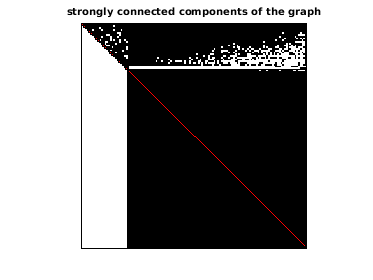SNAP (Stanford Network Analysis Platform) Large Network Dataset Collection,
Jure Leskovec and Anrej Krevl, http://snap.stanford.edu/data, June 2014.
email: jure at cs.stanford.edu
Higgs Twitter Dataset
https://snap.stanford.edu/data/higgs-twitter.html
Dataset information
The Higgs dataset has been built after monitoring the spreading processes
on Twitter before, during and after the announcement of the discovery of a
new particle with the features of the elusive Higgs boson on 4th July 2012.
The messages posted in Twitter about this discovery between 1st and 7th
July 2012 are considered.
The four directional networks made available here have been extracted from
user activities in Twitter as:
1. re-tweeting (retweet network)
2. replying (reply network) to existing tweets
3. mentioning (mention network) other users
4. friends/followers social relationships among user involved
in the above activities
5. information about activity on Twitter during the discovery of
Higgs boson
It is worth remarking that the user IDs have been anonimized, and the same
user ID is used for all networks. This choice allows to use the Higgs
dataset in studies about large-scale interdependent/interconnected
multiplex/multilayer networks, where one layer accounts for the social
structure and three layers encode different types of user dynamics.
For more information about data collection, please refer to our paper.
Dataset statistics are calculated for the graph with the highest number of
nodes and edges:
Social Network statistics
Nodes 456,626
Edges 14,855,842
Nodes in largest WCC 456290 (0.999)
Edges in largest WCC 14855466 (1.000)
Nodes in largest SCC 360210 (0.789)
Edges in largest SCC 14102605 (0.949)
Average clustering coefficient 0.1887
Number of triangles 83023401
Fraction of closed triangles 0.002901
Diameter (longest shortest path) 9
90-percentile effective diameter 3.7
Retweet Network statistics
Nodes 256,491
Edges 328,132
Nodes in largest WCC 223833 (0.873)
Edges in largest WCC 308596 (0.940)
Nodes in largest SCC 984 (0.004)
Edges in largest SCC 3850 (0.012)
Average clustering coefficient 0.0156
Number of triangles 21172
Fraction of closed triangles 0.0001085
Diameter (longest shortest path) 19
90-percentile effective diameter 6.8
Reply Network statistics
Nodes 38,918
Edges 32,523
Nodes in largest WCC 12839 (0.330)
Edges in largest WCC 14944 (0.459)
Nodes in largest SCC 322 (0.008)
Edges in largest SCC 708 (0.022)
Average clustering coefficient 0.0058
Number of triangles 244
Fraction of closed triangles 0.0001561
Diameter (longest shortest path) 29
90-percentile effective diameter 10
Mention Network statistics
Nodes 116,408
Edges 150,818
Nodes in largest WCC 91606 (0.787)
Edges in largest WCC 132068 (0.876)
Nodes in largest SCC 1801 (0.015)
Edges in largest SCC 7069 (0.047)
Average clustering coefficient 0.0825
Number of triangles 23068
Fraction of closed triangles 0.0002417
Diameter (longest shortest path) 18
90-percentile effective diameter 6.5
Data format - higgs-activity_time.txt
userA userB timestamp interaction
Interaction can be RT (retweet), MT (mention) or RE (reply). Each link
is directed. The user IDs in this dataset corresponds to the ones
adopted to anonymize the social structure, thus the datasets (1) - (5)
can be used together for complex analysis involving structure and
dynamics.
Note 1: the direction of links depends on the application, in general.
For instance, if one is interested in building a network of how
information flows, then the direction of RT should be reversed when
used in the analysis. Nevertheless, the choice is left to the
researcher and his/her own interpretation of the data, whereas we just
provide the observed actions, i.e., who
retweets/mentions/replies/follows whom.
Note 2: users mentioned in retweeted tweets are considered as mentions.
For instance, if @A retweets the tweet “hello @C @D" sent by @B, then
the following links are created: @A @B timeX RT, @A @C timeX MT, @A @D
timeX MT, because @C and @D can be notified that they have been
mentioned in a retweet. Similarly in the case of a reply. If for some
reason the researcher does not agree with this choice, he/she can
easily identify this type of links and remove the mentions, for
instance.
Source (citation)
M. De Domenico, A. Lima, P. Mougel and M. Musolesi. The Anatomy of a
Scientific Rumor. (Nature Open Access) Scientific Reports 3, 2980 (2013).
http://www.nature.com/srep/2013/131018/srep02980/full/srep02980.html
Files
File Description
social_network.edgelist.gz Friends/follower graph (directed)
retweet_network.edgelist.gz
Graph of who retweets whom (directed and weighted)
reply_network.edgelist.gz
Graph of who replies to who (directed and weighted)
mention_network.edgelist.gz
Graph of who mentions whom (directed and weighted)
higgs-activity_time.txt.gz
The dataset provides information about activity on
Twitter during the discovery of Higgs boson
---------------------------------------------------------------------------
Notes on inclusion into the SuiteSparse Matrix Collection, July 2018:
---------------------------------------------------------------------------
The SNAP data set is 1-based, with all nodes in all graphs numbered 1
to n=456,626.
In the SuiteSparse Matrix Collection, each matrix is the same size, n-by-n
where n=456,626, so that row/column i in each matrix refers to the same
person i across all matrices. This means that some rows and columns of
the Retweet, Mention, and Reply matrices are empty, but these are left in
so all four matrices can be compared with each other.
Problem.A is the primary social network, and is a directed graph
with no edge weights (an unsymmetric binary matrix). A(i,j)=1 if
person i follows person j. It is not a multigraph.
Retweet = Problem.aux.retweet is the Retweet network, where Retweet(i,j)
is the number of times that person i retweets a tweet of person j.
Mention = Problem.aux.mention is the Mention network, where Mention(i,j)
is the number of times that person i mentions person j.
Reply = Problem.aux.reply is the Reply network, where Reply(i,j)
is the number of times that person i replies to person j.
The Retweet, Mention, and Reply matrices represent multigraphs since each
(i,j,t) with the same i and j but different timestamp t is considered a
separate edge. The timestamps do not appear in these matrices, however.
The higgs-activity_time.txt is a set of labeled temporal edges. Each edge
in the SNAP data set has the form (i,j,time,interaction) where interaction
is string (RT, MT, or RE). In the SuiteSparse Matrix collection, these
edges are stored as a dense matrix, Problem.aux.temporal_edges, where the
kth row of the matrix holds the kth line of the higgs-activity_time.txt
file as the temporal edge [i j interaction time]. The interaction is
converted to an integer, where 1=RT (retweet), 2=MT (mention), and 3=RE
(reply).

